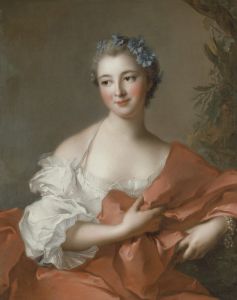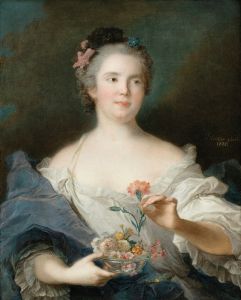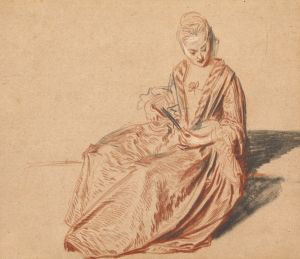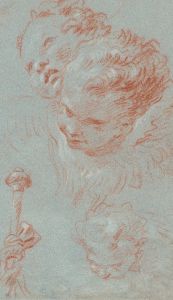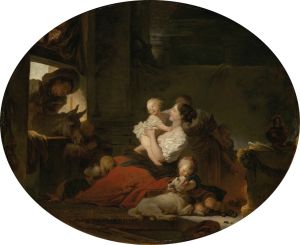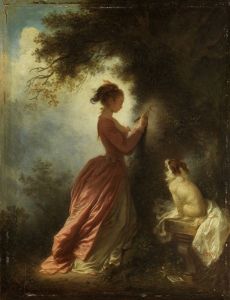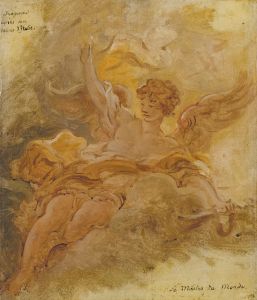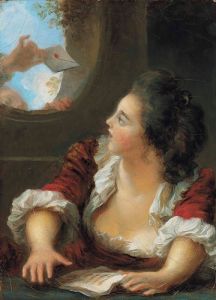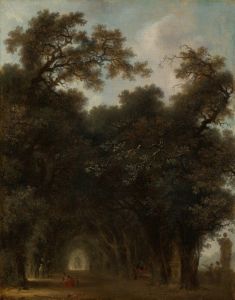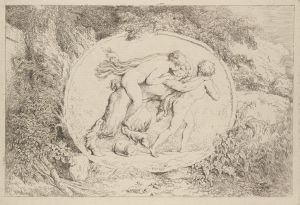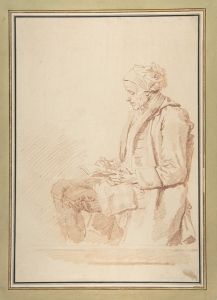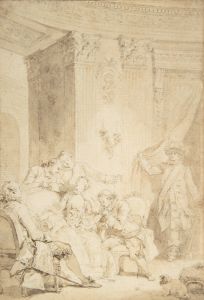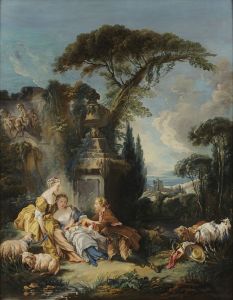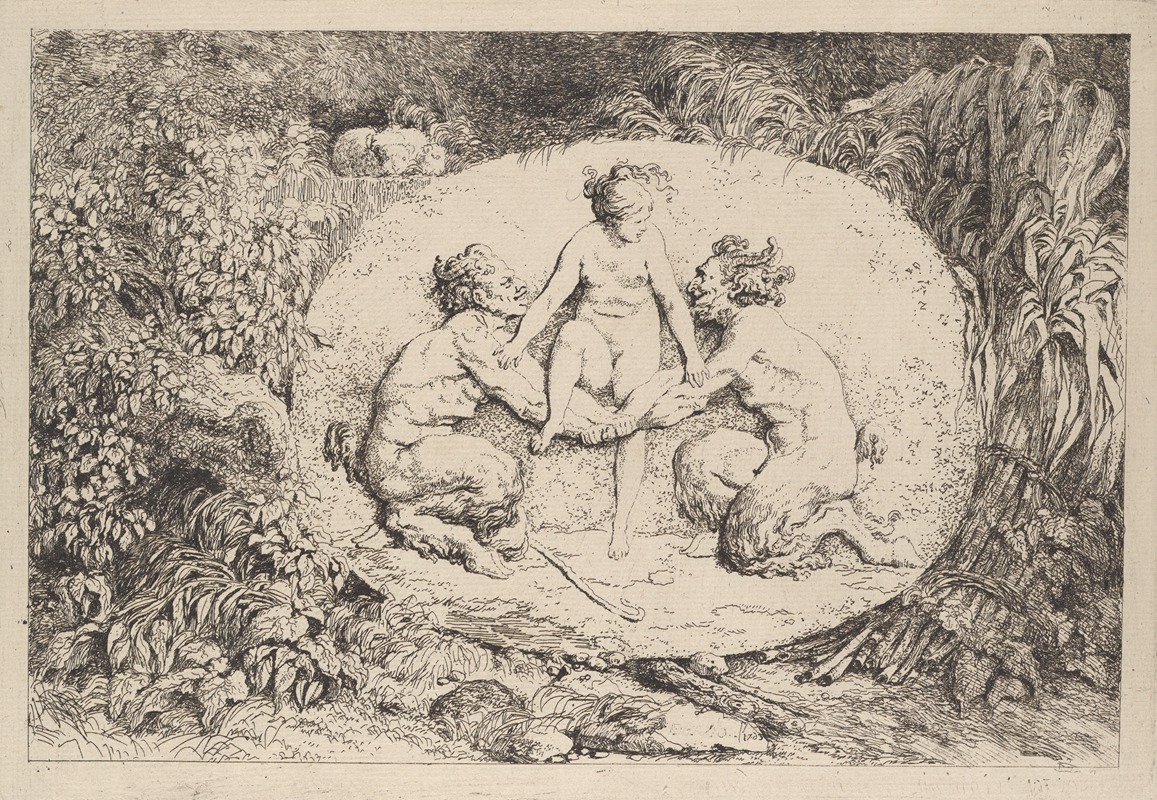
Nymph supported by two satyrs
A hand-painted replica of Jean-Honoré Fragonard’s masterpiece Nymph supported by two satyrs, meticulously crafted by professional artists to capture the true essence of the original. Each piece is created with museum-quality canvas and rare mineral pigments, carefully painted by experienced artists with delicate brushstrokes and rich, layered colors to perfectly recreate the texture of the original artwork. Unlike machine-printed reproductions, this hand-painted version brings the painting to life, infused with the artist’s emotions and skill in every stroke. Whether for personal collection or home decoration, it instantly elevates the artistic atmosphere of any space.
Jean-Honoré Fragonard was a prominent French painter and printmaker whose works are often associated with the Rococo style, characterized by its ornate and decorative qualities. One of his notable works is "Nymph Supported by Two Satyrs," a painting that exemplifies the playful and sensual themes often explored in Rococo art.
"Nymph Supported by Two Satyrs" is believed to have been created in the latter half of the 18th century, during a period when Fragonard was actively producing works that celebrated the pleasures and frivolities of life. The painting depicts a mythological scene, a common subject in Rococo art, which frequently drew upon classical mythology to explore themes of love, beauty, and nature.
In this painting, Fragonard presents a nymph, a mythological spirit of nature typically depicted as a beautiful maiden, being supported by two satyrs. Satyrs are mythological creatures that are part human and part goat, often associated with Dionysian revelry and known for their lascivious nature. The interaction between the nymph and the satyrs in the painting is emblematic of the playful and erotic undertones that are characteristic of Fragonard's work.
Fragonard's use of color and light in "Nymph Supported by Two Satyrs" is notable for its soft, pastel hues and the way light is used to create a sense of movement and vitality. The brushwork is fluid and dynamic, contributing to the overall sense of whimsy and lightheartedness. The composition is carefully balanced, with the figures arranged in a way that guides the viewer's eye through the scene, creating a sense of harmony and balance.
The painting reflects the Rococo style's emphasis on beauty and sensuality, as well as its interest in themes of nature and mythology. Fragonard's work often celebrated the joys of life, and "Nymph Supported by Two Satyrs" is no exception, capturing a moment of playful interaction that is both intimate and exuberant.
Fragonard was a master of capturing the fleeting pleasures of life, and his work often explored the tension between innocence and eroticism. In "Nymph Supported by Two Satyrs," this tension is evident in the delicate portrayal of the nymph and the more robust, earthy depiction of the satyrs. The painting invites viewers to indulge in the fantasy and escapism that were central to the Rococo aesthetic.
Throughout his career, Fragonard was celebrated for his ability to convey emotion and movement in his paintings, and "Nymph Supported by Two Satyrs" is a testament to his skill and creativity. The painting remains an important example of Rococo art and continues to be appreciated for its beauty and artistic merit.
Jean-Honoré Fragonard's contributions to the art world extend beyond his paintings, as he was also an accomplished printmaker. His works have left a lasting impact on the art world, influencing subsequent generations of artists and continuing to be studied and admired for their technical brilliance and imaginative compositions. "Nymph Supported by Two Satyrs" is a quintessential example of Fragonard's ability to capture the essence of the Rococo period, with its emphasis on elegance, charm, and the celebration of life's pleasures.





